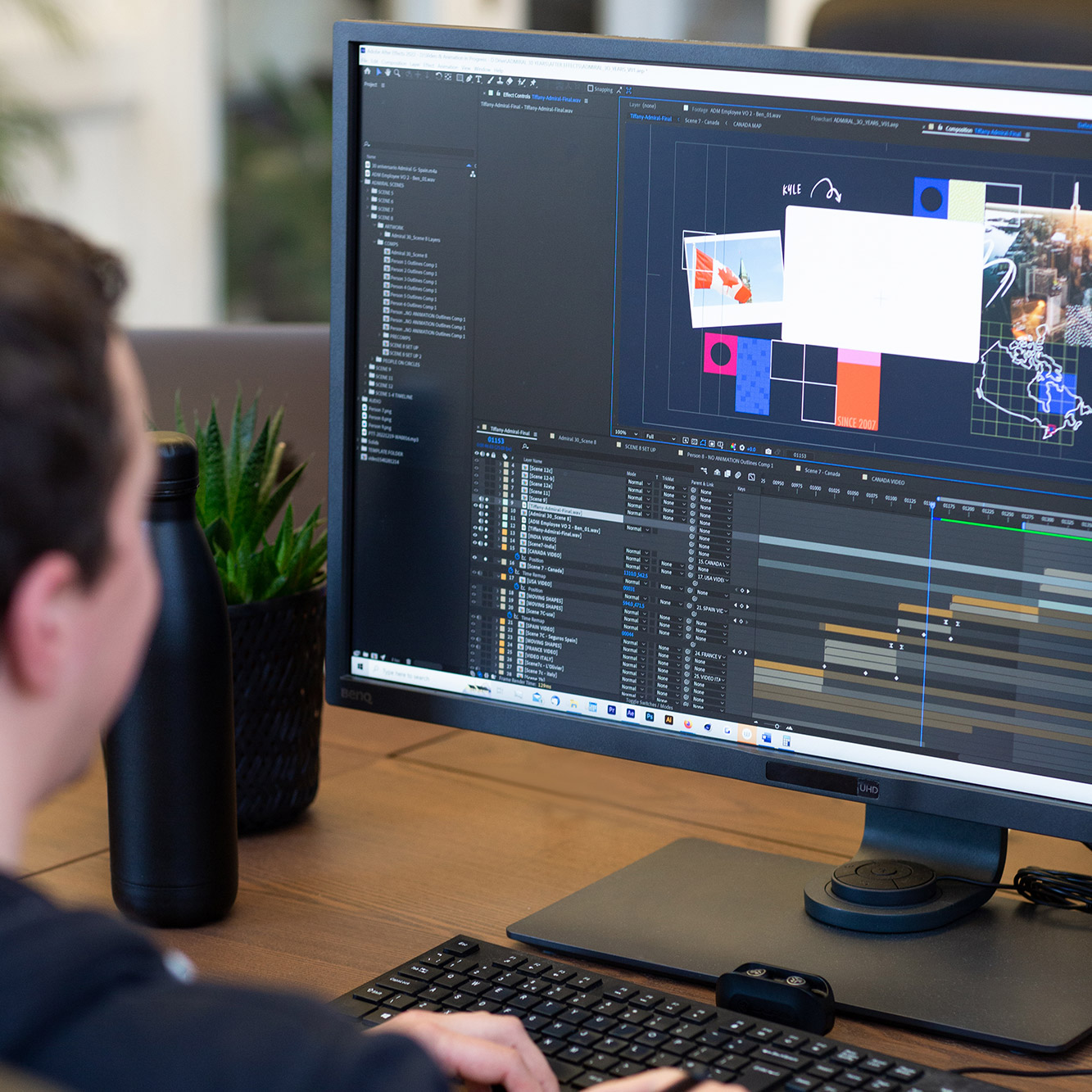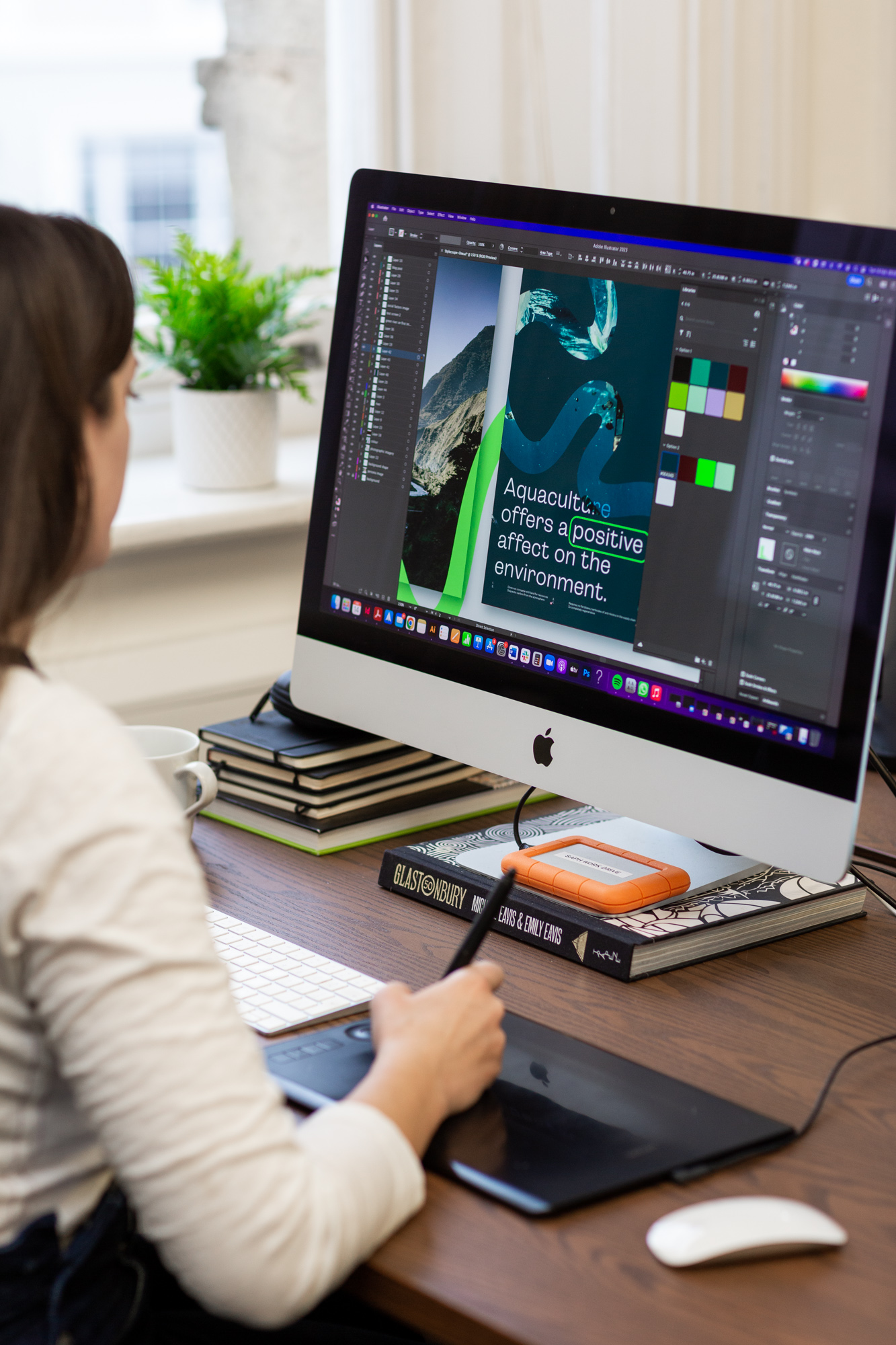4. Rive – Real-Time Animation for Interactive Experiences
Rive is a game-changer for interactive motion. It allows designers to create animations that run in real time on the web and in apps. No rendering, no export, just clean, code-ready motion.
Agencies working in UI animation, gaming, or branded digital products are increasingly adopting Rive to create lightweight, responsive animations that developers can implement directly.
5. Adobe Illustrator & Photoshop – Design Staples
Though not built for animation, these are still core tools for asset creation. Illustrator is perfect for creating scalable vector graphics, while Photoshop handles textures, matte painting, and raster image work.
Most motion design workflows start with clean, layered files from these programs. Photoshop also remains a favourite for many motion designers who specialise in frame-by-frame, cel animation or stop motion techniques.
6. Figma – Collaboration at the Speed
Motion design is often part of a larger creative ecosystem. Figma makes it easy for teams and clients to collaborate, review designs, and export layered assets. With plugins like Figmotion, even basic animation prototyping is possible inside Figma.
A motion design agency that uses Figma can work more efficiently with marketing, product, and development teams.


